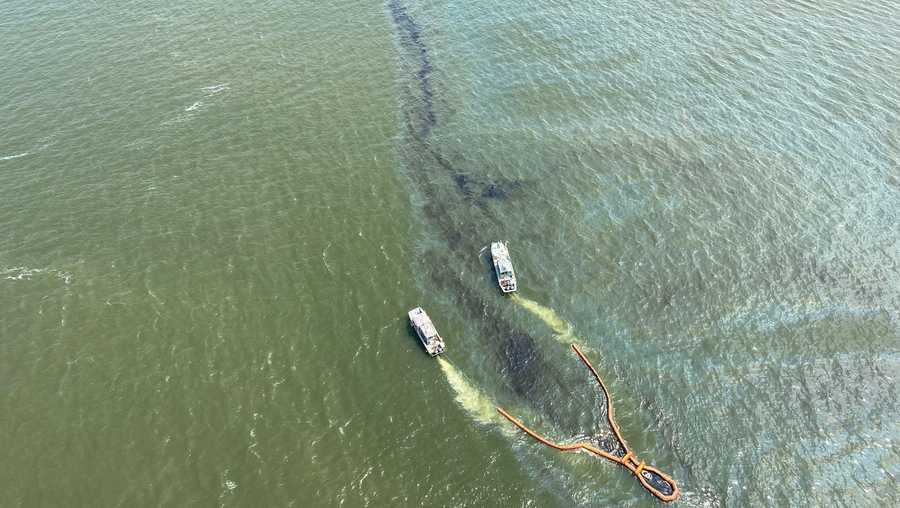Swimmers, fishers asked to look out for oil in water around Jekyll, St. Simons Islands
Oil was discharged while crews lifted a section of the Golden Ray wreck on Saturday. As a result, there may be a potential presence of oil in the water and on the beaches around Jekyll Island and St. Simons Island.
Oil was discharged while crews lifted a section of the Golden Ray wreck on Saturday. As a result, there may be a potential presence of oil in the water and on the beaches around Jekyll Island and St. Simons Island.
Oil was discharged while crews lifted a section of the Golden Ray wreck on Saturday. As a result, there may be a potential presence of oil in the water and on the beaches around Jekyll Island and St. Simons Island.
We're told multiple mitigation strategies are being deployed inside and outside the Environmental Protection Barrier (EPB) in response to the oil discharge.
Responders reportedly deployed multiple pre-staged pollution mitigation assets such as Current Busters, oil skimmers and barrier and sorbent boom both inside and outside of the EPB directly after the discharge.
With the help of helicopter aerial observation, we're told responders identified and adjusted on-water containment vessels to oil entraining underneath the EPB as it traveled westward on a flooding tide on Saturday. As the tide ebbed, oil entrained under the barrier into the shipping channel alongside the south end of St. Simons Island passing the St. Simons Island fishing pier.
"We have all assets deployed and are moving quickly to contain any dense oil which migrated beyond the EPB with the shifting tides," said Incident Commander Chris Graff of Gallagher Marine Systems. "Our people have trained and equipment is prepared to ensure the protection of the people and environment of St. Simons Sound."
As responders with the St. Simons Sound Incident Unified Command use multiple mitigation measures to contain any pollutants, the Coastal Health District is advising the public to stay alert for oil in the water and on the sand. Oil that reaches the coastline may be in the form of bands or small, sticky globules and may be encountered by individuals who are swimming or fishing.
If you step on a tar ball or get oil on your skin, wash off the oil with soap and clean water. There is no need to use harsh detergents, solvents or other chemicals to wash oil from skin or clothing – these could be harmful to you.
If you see a sheen of oil on the surface of the water, you're asked to get out of the water and report the sheen to the U.S. Coast Guard National Response Center at 1-800-424-8802. Do not swim or fish in an area with a visible oil sheen.


